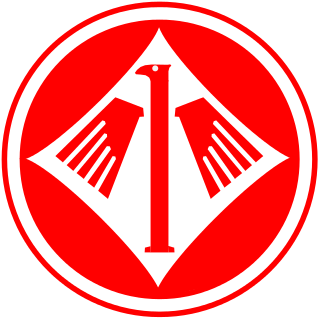 W
WJagdgeschwader 1 (JG 1) "Oesau" was a German World War II fighter wing created in 1939. Between 1940 and 1942, JG 1 operated primarily over the Western Front and northern occupied Europe. During the initial days of the war, JG 1 faced little resistance, apart from occasional Royal Air Force (RAF) excursions. The unit was rarely engaged in large-scale confrontations during this time.
 W
WJagdgeschwader 2 (JG 2) "Richthofen" was a German fighter wing during World War II. JG 2 operated the Messerschmitt Bf 109 and Focke-Wulf Fw 190 single-seat, single-engine Interceptor aircraft.
 W
WJagdgeschwader 3 "Udet" was a Luftwaffe fighter-wing of World War II. The Geschwader operated on all the German fronts in the European Theatre of World War II. It was named after Ernst Udet in 1942.
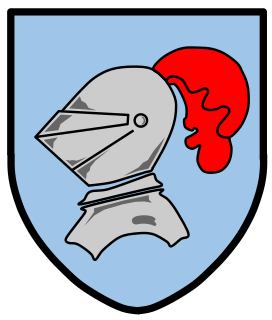 W
WJagdgeschwader 4 was a Luftwaffe fighter-wing of World War II.
 W
WJagdgeschwader 5 was a German Luftwaffe fighter wing during World War II. It was created to operate in the far north of Europe, namely Norway, Scandinavia and northern parts of Finland, all nearest the Arctic Ocean, with Luftflotte 5, created specifically to be based in occupied Norway, and responsible for much of northern Norway.
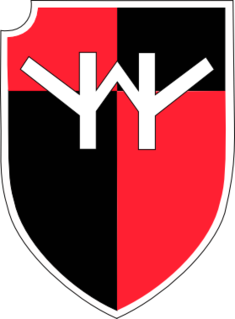 W
WJagdgeschwader 6 Horst Wessel was a Luftwaffe fighter wing during World War II. Created late in the war as one of the last Jagdgeschwader, JG 6 fought on the Western and Eastern Fronts and in the Defence of the Reich over Germany. This period of the air war was characterised by few successes and heavy losses among the German fighter arm.
 W
WJagdgeschwader 11 was a fighter wing of the German Luftwaffe during World War II. Its primary role was the defense of Northern Germany against Allied day bomber raids. Formed in April 1943 as a split from Jagdgeschwader 1, the unit primarily used the Messerschmitt Bf 109 and Focke-Wulf Fw 190.
 W
WJagdgeschwader 20 was a Luftwaffe fighter wing during the early phase of World War II in Europe. JG 20 was founded on 15 July 1939 in Döberitz, composed of one Gruppe and two Staffeln. A third Staffel was added on 5 November 1939 in Brandenburg-Briest. The sole Gruppe was redesignated as 3rd Gruppe of Jagdgeschwader 51 on 4 July 1940. During the Battle of France it was subordinated to Luftflotte 2. The unit's commanders included Hauptmann Hannes Trautloft, from 19 September 1939 to 4 July 1940.
 W
WJagdgeschwader 26 (JG 26) Schlageter was a German fighter-wing of World War II. It was named after Albert Leo Schlageter, a World War I veteran, Freikorps member, and posthumous Nazi martyr, arrested and executed by the French for sabotage in 1923. The wing fought predominantly against the Western Allies.
 W
WJagdgeschwader 27 (JG 27) "Afrika" was a fighter wing of the Luftwaffe during World War II. The wing was given the name "Africa" for serving in the North African Campaign predominantly alone in the period from April 1941 to September 1942. Elements of JG 27 fought in every major theatre of operations in which the Wehrmacht operated.
 W
WJagdgeschwader 50 , sometimes erroneously referred to as Jagdgruppe 50, was a special high-altitude fighter unit that was intended to be specialized in intercepting the Royal Air Force's de Havilland Mosquito light bombers during World War II.
 W
WJagdgeschwader 51 was a German fighter wing during World War II. JG 51's pilots won more awards than any other fighter wing of the Luftwaffe, and operated in all major theatres of war. Its members included Anton Hafner, Heinz Bär, Karl-Gottfried Nordmann, and Günther Schack.
 W
WJagdgeschwader 52 was a German World War II fighter-wing that exclusively used the Messerschmitt Bf 109 throughout the war. The unit originally formed near Munich in November 1938, then moved to a base near Stuttgart. JG 52 became the most successful fighter-wing of all time, with a claimed total of more than 10,000 victories over enemy aircraft during World War II. It was the unit of the top three scoring flying aces of all time, Erich Hartmann, Gerhard Barkhorn and Günther Rall.
 W
WJagdgeschwader 53 was a Luftwaffe fighter-wing of World War II. It operated in Western Europe and in the Mediterranean. Jagdgeschwader 53 - or as it was better known, the "Pik As" (Ace of Spades) Geschwader - was one of the oldest German fighter units of World War II with its origins going back to 1937. JG 53 flew the various models of the Messerschmitt Bf 109 throughout World War II.
 W
WJagdgeschwader 54 was a Luftwaffe fighter wing during the Second World War. JG 54 flew most of its missions on the Eastern Front where it claimed more than 9,600 aircraft shot down. It was the second-highest scoring wing in the Luftwaffe after JG 52. Notable pilot aces (Experten) that flew with JG 54 included Walter Nowotny, Otto Kittel, Hans-Ekkehard Bob, Max-Hellmuth Ostermann, Hugo Broch and Hannes Trautloft.
 W
WJagdgeschwader 77 Herz As was a Luftwaffe fighter wing during World War II. It served in all the German theaters of war, from Western Europe to the Eastern Front, and from the high north in Norway to the Mediterranean.
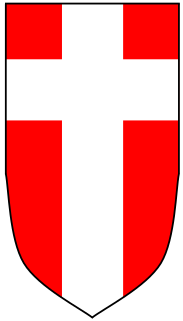 W
WJagdgeschwader 101 was a Luftwaffe fighter-training-wing of World War II.
 W
WJagdgeschwader 134 "Horst Wessel" was a Luftwaffe fighter-wing prior to World War II. JG 134 was formed on 4 January 1936 with III. Gruppe in Döberitz. The Geschwader was given the honorific name Horst Wessel on 24 March 1936. II Gruppe was formed on 15 March 1936 in Werl and was followed by the Geschwaderstab and I. Gruppe on 1 April 1936 in Dortmund. It would later become one of the premier Zerstörer wings of the Luftwaffe, as Zerstörergeschwader 26.
 W
WJagdgeschwader 300 was a Luftwaffe fighter-wing of World War II. JG 300 was formed on June 26, 1943 in Deelen as Stab/Versuchskommando Herrmann, from July 18, 1943 as Stab/JG Herrmann and finally renamed on August 20, 1943 to Stab/JG 300. Its first Geschwaderkommodore was Oberstleutnant Hajo Herrmann.
 W
WJagdgeschwader 301 was a Luftwaffe fighter-wing of World War II. The order to form JG 301 was issued on 26 September 1943 and formed on 1 October 1943 in Neubiberg with Stab and three Gruppen (groups) as a "Wilde Sau" single-seat night fighter unit.
 W
WJagdgeschwader 302 was a Luftwaffe fighter-wing of World War II. JG 302 was formed on 1 November 1943 in Stade, Germany with a theoretical establishment of Stab and three Gruppen (groups) known as a "Wilde Sau" single-seat night fighter unit. After re-equipping with the Focke-Wulf 190 A-8, I./JG 302 was redesignated III./JG 301 on 30 September. JG 302 made a known total of at least 348 air victory claims
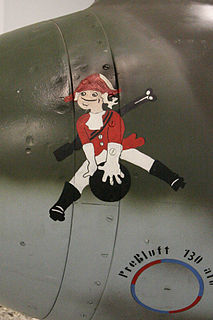 W
WJagdgeschwader 400 was a Luftwaffe fighter-wing of World War II. JG 400 was formed on 1 February 1944 in Brandis with Stab only for the Messerschmitt Me 163 rocket fighter, as the only military aviation unit of any size in history, to actively use rocket-powered combat aircraft in wartime.
 W
WKampfgeschwader 1 was a German medium bomber wing that operated in the Luftwaffe during World War II.
 W
WKampfgeschwader 2 " Holzhammer " was a Luftwaffe bomber unit during the Second World War. The unit was formed in May 1939. The unit operated the Dornier Do 17 light bomber, Dornier Do 217 and Junkers Ju 188 heavy bombers. During the course of the Second World War KG 2 lost 767 aircraft destroyed and 158 damaged. According to H.L. de Zeng at al, it suffered 1,908 personnel killed in action or missing in action and 214 as prisoners of war. Broken down further, for the duration of the war KG 2 lost 1,228 killed, 688 missing, 656 wounded and with 214 captured, for a total of 2,786 in both combat and non-combat operations.
 W
WKampfgeschwader 3 "Blitz" was a Luftwaffe bomber wing during World War II.
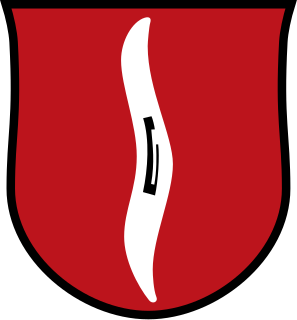 W
WKampfgeschwader 4 "General Wever" was a Luftwaffe bomber wing during World War II. The unit was formed in May 1939. The unit operated the Dornier Do 17, Junkers Ju 88 and Heinkel He 111 medium bombers, with later service on the Heinkel He 177 heavy bomber. The wing was named after General Walther Wever, the prime pre-war proponent for a strategic bombing capability for the Luftwaffe, who was killed in an aircraft accident in 1936.
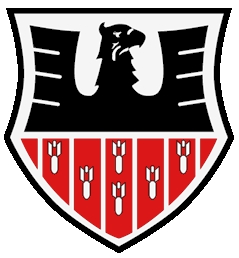 W
WKampfgeschwader 6 was a Luftwaffe bomber unit during the Second World War. The unit was formed between April and September 1942 and was equipped with Dornier Do 217, Junkers Ju 188 and Junkers Ju 88 bombers.
 W
WKampfgeschwader 26 "Löwengeschwader" was a German air force Luftwaffe bomber wing unit during World War II. Its units participated on all of the fronts in the European Theatre until the end of the war. It operated three of the major German aircraft medium bomber types; the Heinkel He 111, Junkers Ju 88 and the Junkers Ju 188. The unit engaged in both strategic bombing, close air support, anti-shipping and aerial interdiction operations. The majority of its operational life – not entirely unlike another Luftwaffe wing designated KG 40 — was spent on anti-shipping missions.
 W
WKampfgeschwader 30 was a Luftwaffe bomber wing during World War II.
 W
WKampfgeschwader 40 was a Luftwaffe medium and heavy bomber wing of World War II, and the primary maritime patrol unit of any size within the World War II Luftwaffe. It is best remembered as the unit operating a majority of the four-engine Focke-Wulf Fw 200 Condor maritime patrol bombers. The unit suffered from the poor serviceability and low production rates of the Fw 200 bombers, and from repeated diversion of its long-haul capability aircraft to undertake transport duties in various theatres, especially for the airlift operations to supply encircled forces in the Battle of Stalingrad. Later in the war, KG 40 became one of several Luftwaffe bomber wings to use the Heinkel He 177A heavy bomber.
 W
WKampfgeschwader 53 "Legion Condor" was a Luftwaffe bomber wing during World War II. Its units participated on all of the fronts in the European Theatre until it was disbanded in May 1945. At all times it operated the German bomber type Heinkel He 111. Only the 15th (kroat) Squadron of KG 53, established in Agram (Zagreb) July 1942, operated the Dornier Do 17 Z.
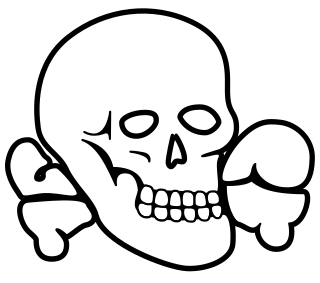 W
WKampfgeschwader 54 "Totenkopf" was a Luftwaffe bomber wing during World War II. It served on nearly all the fronts in the European Theatre where the German Luftwaffe operated.
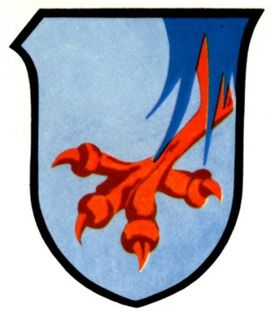 W
WKampfgeschwader 76 was a Luftwaffe bomber Group during World War II. It was one of the few bomber groups that operated throughout the war.
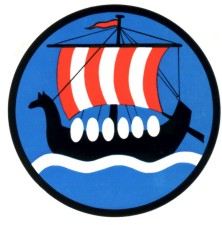 W
WKampfgeschwader 100 was a Luftwaffe medium and heavy bomber wing of World War II, and the first military aviation unit to use an unpowered precision-guided munition in combat to sink a warship on 9 September 1943 with the destruction of the Italian battleship Roma, in the first successful use of the Fritz X armor-piercing, gravity PGM ordnance.
 W
WKampfgruppe 100 was a specialist unit of the Luftwaffe during the early stages of World War II. It is best known as the first unit to use the "pathfinder" concept, with its aircraft being equipped with the latest radio navigation aids to find their targets and then dropping flares on them to mark the target for the following bombers.
 W
WNachtjagdgeschwader 3 was a Luftwaffe night fighter-wing of World War II. NJG 3 was formed on 29 September 1941 in Stade from Stab./Zerstörergeschwader 26.
 W
WNachtjagdgruppe 10 was a German Luftwaffe night fighter gruppe (group) during World War II. It was formed on 1 January 1944 at Werneuchen with 3 Staffel (squadrons). It was subordinated to the 1. Jagd-Division, stationed at Döberitz. On 6 March 1945, NJGr 10 transferred to Liebenwalde and disbanded in April 1945. The remnants of NJGr 10 were absorbed by Nachtjagdgeschwader 5. Its main task was to explore new and revised tactical deployment of night fighters, test the latest search and detection equipment in conjunction with the test site for radar equipment under combat conditions, and place the anti-Mosquito effort under a more centralised command.
 W
WSchlachtgeschwader 1 was a German Luftwaffe wing during World War II. It operated the Henschel Hs 123, Henschel Hs 129, Focke-Wulf Fw 190, and the Messerschmitt Bf 109.
 W
WSchlachtgeschwader 3 was a Luftwaffe close air support Geschwader during World War II. It was formed on 18 October 1943 in Eleusis from the Stab/Sturzkampfgeschwader 3. A special detachment was formed 13 June 1944 to 13 August 1944 referred to as Detachment Kuhlmey. The detachment was built around elements of I./SG 3, I./SG 5, II./JG 54 and NaGr.1
 W
WSchnellkampfgeschwader 10 was a Luftwaffe fast bomber wing of the Second World War. The unit was initially created with three Gruppen (groups) in December 1942 at Saint-André-de-l'Eure Airport and augmented by a fourth group on 10 April 1943.
 W
WSchnellkampfgeschwader 210 was a Luftwaffe fast-bomber wing during the Second World War. The unit was created in April 1941 and absorbed by the Zerstörergeschwader 1 on 4 January 1942.
 W
WSturzkampfgeschwader 1 was a Luftwaffe dive bomber wing during World War II.
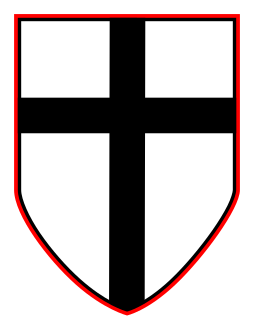 W
WSturzkampfgeschwader 2 Immelmann was a Luftwaffe dive bomber-wing of World War II. It was named after the World War I aviator Max Immelmann. It served until its dissolution in October 1943. The wing operated the Junkers Ju 87 Stuka exclusively.
 W
WSturzkampfgeschwader 3 was a Dive bomber wing in the German Luftwaffe during World War II and operated the Junkers Ju 87 Stuka.
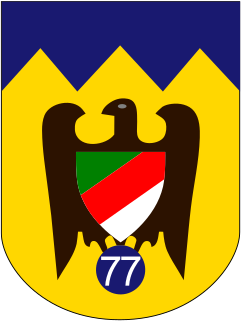 W
WSturzkampfgeschwader 77 was a Luftwaffe dive bomber wing during World War II. From the outbreak of war StG 77 distinguished itself in every Wehrmacht major operation until the Battle of Stalingrad in 1942. If the claims made by StG 77 are accurate, it inflicted more damage to enemy ground forces than any other wing. It operated the Junkers Ju 87 dive-bomber exclusively in the combat role. The Dornier Do 17 and Messerschmitt Bf 110 were both used in the air reconnaissance role.
 W
WZerstörergeschwader 1 was a Luftwaffe heavy/destroyer Fighter Aircraft-wing of World War II.
 W
WZerstörergeschwader 26 "Horst Wessel" was a Luftwaffe heavy fighter wing of World War II.